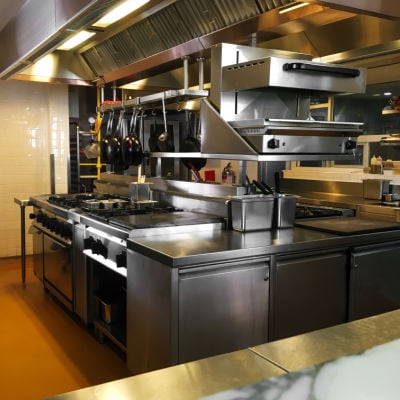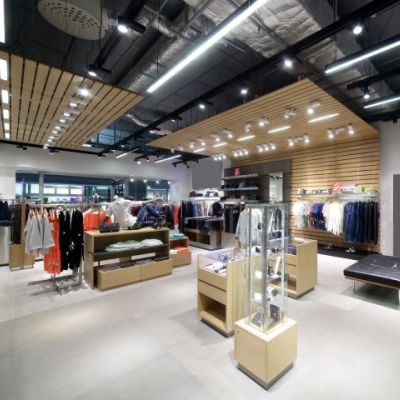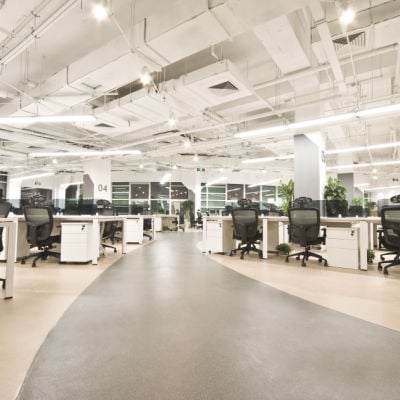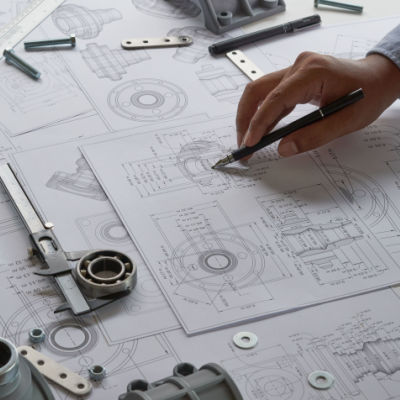
NY ENGINEERS
Electrical Engineering Services
Today's buildings have more electrical components than ever. From low to high voltage building systems, normal and emergency power, we have your solution.

YOUR ONE STOP SHOP FOR ALL MEP NEEDS!
the engineering service your team will love
NY Engineers has completed over 4000+ projects with the fastest industry turnaround while providing cost effective solutions. We are the pioneers of quick, affordable & drama free construction!
Have a project in mind?
Our team of experts are equipped to handle all types of project!

COMMERCIAL KITCHENS

RETAIL

HEALTHCARE

HOTELS

OFFICE SPACES

FRANCHISES

RESIDENTIAL

GOVERNMENT

OTHER
OTHER

IMPRESSED?
Call us or fill out the form and we will call you back within 24 hours!
We can give you 1000 reasons to work with us,
let's start with 6
50
States
We are licensed in all 50 states!
0
Errors
Assess the load of the equipment accurately
4000+
Projects
We have completed so far!
300+
Brands
We work with the biggest names in the Franchise industry
5
Days
Enjoy our lightening fast turnaround
$750
Cost Eff.
Very budget friendly & cost effective
NEED A SPECIFIC SERVICE SOLUTION FROM US?
Some of our most requested services
- Most Requested Services
- System Components In Our Designs
- Agencies Approvals We Secure
- On demand Services
-
Agencies Approvals We Secure

TALK TO OUR PARTNER / PRINCIPAL
In 2024, NY Engineers grew by 25% in terms overall project delivery and customer satisfaction. High quality, quick responsiveness and fast turnarounds are the primary principles on which we thrive on. With rise in cloud kitchen and retail stores in 2025, we plan to expand our reach to all franchise owners and corporates and become their #1 option for Engineering design. We also plan to design and model more energy efficient buildings in order to reduce the overall load on the grid and help reduce global warming.
CALL US NOW
(786) 788-0295
- Electrical Design Service Overview
- Details of what’s covered in Lighting/ electrical Design
- Who can benefit from electrical design engineering services?
- Industry Standards we follow
- Why choose our Electrical Design Services?
- Contact us
At Nearby EngineersNew York Engineers , we provide engineering design services for major industrial, commercial, residential, retail, hotels, restaurant, Office, healthcare, manufacturing, education, government and non-profit projects and environmentally certified assets. Nearby Engineer'sNew York Engineer's team has provided a specialist electrical engineering design and management service during the last two decades.
Explore NY Engineers' exceptional electrical design services. As a renowned electrical design firm, we specialize in crafting cutting-edge electrical systems. Our dedicated team ensures your projects are powered by innovative, safe, and sustainable solutions.
NY Engineers provides a comprehensive suite of electrical design services tailored to diverse industries. Explore our wide-ranging solutions below to discover how we meet your unique project requirements.
At Nearby EngineersNew York Engineers we offer a quality electrical engineering design service for all stages of construction faster turnaround time, optimum energy utilization, equipment safety, and lower costs.
Our electrical engineering designs include floor plans, diagrams, schedules, specifications, and construction details relating to electrical equipment, cables, switches other related fittings and accessories. These are all reviewed, signed, and sealed by a licensed professional electrical design engineer.
We offer electrical engineering design services for all types of buildings. A well-designed electrical installation is a cornerstone for many other building systems, including air handlers, water pumps, air conditioners, communication networks, lighting, and office equipment. Our electrical design engineers can specify an installation that delivers the power required by your building while operating safely and meeting the applicable building codes.
Since the prices of electricity are rising frequently, energy efficiency can yield a very attractive return on investment. We can identify the most promising measures to reduce your power bills while conducting a feasibility.
We provide electrical design services for commercial and residential projects, working with you to create a customized lighting solution that meets your needs, budget, and aesthetic goals. Our electrical design consultants will consider the layout of your space, and the amount of natural light available to create a lighting design that is both functional and cost effective.
Electric Load letter
At NY Engineers, our seasoned electrical design engineers employ meticulous assessment to determine your project's precise electrical requirements. Our accurate electrical load estimations are indispensable for securing permits and seamless grid connections. We make sure electric consumption of your building or apartment is accurately calculated to make sure you can upgrade it as per the amps suggested for your property. We have delivered hundreds of load letters across US that helped renovation and upgrade to the owners. We assist you with load letters that can be submitted to either utility company or building management.
Electric Load Letters are assessments of the adequacy of power for electrical equipment and are often required by landlords.
Nearby Engineers can prepare a load letter for you within 5 days to give you confidence to sign a commercial lease.
We offer electric load letter to:
- Ensure your commercial or residential space can manage adequate electric load.
Photometric analysis
NY Engineers' expertise encompasses in-depth photometric analysis of your property ensuring the achievement of desired illuminance levels and uniformity. Our adept photometric engineers leverage state-of-the-art software to simulate your lighting, providing a transparent view of its performance while identifying opportunities for energy savings.
Lighting COMcheck
Streamline your lighting design with Lighting COMcheck, an indispensable software tool. It helps identify and rectify design errors, ensuring safety, efficiency, and alignment with your requirements. Save time and resources with this powerful utility, backed by NY Engineers' seasoned electrical design consultants and electrical design engineers.
EV car charging station design
We provide electrical engineering design services for EV car charging stations, working with you to create a customized design that meets your needs and budget. Our electrical design consultants will design electrical system as per your preferred location, the number of vehicles that will be using them, and the electrical infrastructure available.
Voltage drop calculations
Voltage drop can cause problems to your equipment, such as reduced performance and premature failure. Our electrical design consultants can perform voltage drop calculations to ensure that your electrical system is properly sized and that your equipment is operating at its full potential.
Electric riser diagram
We can create an electric riser diagram for your building, which is a detailed drawing that shows the location and routing of all of the electrical wires and cables in your electrical system. This diagram is essential for troubleshooting electrical problems and for making changes to your electrical system.
Electric lighting quantity take-off
Trust NY engineers to perform an electric lighting quantity take-off for your building, which is a process of counting and measuring all of the electrical lighting fixtures in your building. This information is essential for estimating the cost of your lighting project and for ordering the necessary materials.
Energy analysis
Our experts can perform an energy analysis of your building to identify areas where you can save the energy. This analysis can help you to reduce your energy costs and improve your environmental impact. Our electrical engineers will use their expertise to conduct an in-depth energy analysis of your building remotely and recommend the most cost-effective ways to save energy.
Panel Board Schedules
Panel Board schedules generate critical information for electrical engineers to size conduits, conductors and control systems.
At Nearby EngineersNew York Engineers our professionals develop panel board load schedules during the design stage using software to perform different calculations with the future in mind allowing room for projectable additional load.
We provide a specialist panel board scheduling service to:
- Assess the adequacy of overload and placing various other protection systems within a building.
What benefits you can get from panel board schedules?
- A load-schedule can provide a good estimation of the electrical load during peak or normal hours.
- It enables the design to consider provisions regarding extra loads or it can advise the owner about the requirements of expansion.
- During the peak hours, a load-schedule provides an opportunity to execute a scheme for power management to keep the load at par and reduce the instances of alternating between a high peak and very low periods of consumption.
- The schedule can enable proper management, and brings down the electricity cost even during peak hours and consume less energy.
- The design enables the engineers to take care of future loads.
- It also enables the engineers to choose the right size of conduits, conductors and control systems.
Switchgear
Switchgear refers to the range of switches and circuit breakers used in an electric power system to control, regulate and switch electrical circuits on and off.
At Nearby EngineersNew York Engineers our electrical engineers can design how to control a circuit and enable switchgear to protect and isolate electrical equipment from the power supply, enabling testing, maintenance and fault clearing work to be undertaken.
We provide a switchgear design service to:
- safeguard your facility and the IT equipment, reduce cost, meet demands and provide customized switchgear designs that will increase the productivity of your facility.
Electrical Lighting Design
Electrical lighting design is required to improve efficiency, save unnecessary expense and maximise functional and aesthetic effect.
At Nearby EngineersNew York Engineers our lighting design experts use a structured design approach that identifies specific client needs and lighting system requirements.
We provide a specialist lighting design service to improve energy efficiency, reduce costs, enhance equipment life, and improve building safety.
Emergency Generator Systems
Emergency generator systems are required to provide a back-up electrical supply if the local electric utility company suffers an interruption. Implementing emergency generator systems in a building is mandatory as per the law in the US.
Nearby EngineersNew York Engineers can design and specify standby power systems and emergency power systems for variety of sectors, including for domestic or commercial properties.
We provide an emergency generator design and specification service to ensure our clients are not left without backup power even for a short amount of time as the consequences can be significant. In commercial locations, there is a financial benefit from owning a generator as they allow business operate continuity even when there is no power supply.
Main or Sub Distribution Panel Design
Main or sub distribution boards or panels are part of an electrical power distribution system by which electrical energy is transmitted via branches to reach end users.
At Nearby EngineersNew York Engineers , we have a team of experienced electrical engineers to safely design main or sub distribution board arrangements, with sheet metal enclosures, circuit breakers and a dead front; preventing circuit breaker operators from contacting live electrical parts within.
We provide an expert main or sub distribution boards or panel design service to provide safe installations.
Sub Metering
With submetering, or direct metering, individual energy usage can be controlled, instead of the single-point, utility-owned power meter.
At Nearby EngineersNew York Engineers our licensed professional electrical engineers can assist in facilitating sub-metering or direct metering by shifting to off-peak times.
We provide a submetering design service to reduce operating costs and streamline facility management.
New Building Electrical Design
New building electrical design needs to be optimized to avoid faults, improve energy efficiency and reduce overall cost. This requires assistance from experienced electrical design engineer.
Nearby EngineersNew York Engineers cover new building electrical design from inception to handover, with skilled proficiency and expert electrical knowledge and provides a thorough assessment of electrical design to suit any given construction project. Accounting for all critical factors such electrical supply and tapping line access and including switchgear, panel board schedules and electric riser diagrams, checking it via our BIM service through clash detection and testing it through our commissioning service.
We provide a new and current building electrical design service to complement our range of electrical design services to assist in expedient approval from the Department of Buildings.
For more information on our BIM service see: BIM services.
Renovation Electrical Design
Renovation electrical design, like new build electrical design, needs to be optimised to avoid faults, improve energy efficiency and reduce overall cost. It requires fast-track operation and can benefit from BIM enhanced design.
Nearby EngineersNew York Engineers electrical engineering team will analyze a building, assess the electrical system and then survey and access ceilings, walls and floors to determine the field condition and locate the existing electrical components.
We provide a renovation electrical design service with a fast turn around time, with a hands-on approach to achieve cost-savings.
Branch Wiring Design
Branch Wiring Design involves mapping electrical wires from overhead utility line or underground feeder wires, to a distribution panel board, and individual branch circuits to standard lighting and major appliance circuits, including circuit breakers, and designing as necessary ensure codes are met.
Nearby EngineersNew York Engineers can carry out code-compliant branch wiring design for new build or renovation projects. including material specification, wire colour disparity, voltage rating and wire gauges.
For the former this can include lighting and power layouts, calculating total voltage load against wattage output to obtain the amperage needed for each circuit, and inputting a demand load factor to avoid oversaturating the circuit, For the latter they can determine the reusable branch wiring.
Mechanical Power Designs
For operative performance, energy efficiency and integrative design, mechanical power design increasingly need to overlap with electrical engineering.
We provide a specialist mechanical power design service to complement our range of electrical design services.
For more information on our wider range of mechanical engineering services see: mechanical engineering services.
At NY Engineers, our electrical design services extend across diverse sectors, serving a multitude of industries. Explore our comprehensive solutions tailored to meet the unique needs of each sector.
Electrical Services for Residential Buildings
Our residential electrical services cater to single and multi-family homes, recognizing the crucial role of electrical systems in these spaces. Additionally, we provide electrical engineering solutions for mixed-use residential buildings, ensuring safety and efficiency for all building users. Here is a brief description of the different types of residential electrical design services that we provide.
Single and multi-family residential
We recognize the pivotal role of the electrical system in homes and multi-family buildings. With our years of experience and deep knowledge of electrical codes, we deliver cost-effective, technologically advanced electrical designs. Our solutions meet rigorous building codes, ensuring smooth installations, easy authority approvals and long-term performance.
Mixed use residential buildings
We provide electrical engineering services for mixed-use residential buildings, including residential apartments, retail space, and office space. We coordinate the electrical design of all components of the building to ensure a safe and efficient system. We also work with you to meet the needs of all users of the building.
Electrical Services for commercial Buildings
NY Engineers offers comprehensive electrical engineering design services tailored for office spaces, commercial buildings, retail stores, manufacturing facilities, warehouses, and other industrial spaces. Here is a brief description of the electrical design services for commercial buildings that NY Engineers provides.
Office spaces/ commercial buildings
NY Engineers provides electrical engineering design services for office spaces, commercial buildings, and retail stores. Our designers will prepare an electrical site plan and layout for your buildings that adheres to local, state and national laws such as IEC, IBC, etc. We ensure that your electrical system is able to support the needs of your business and meets all applicable codes and regulations.
Manufacturing/ warehouse
NY Engineers provides electrical design services for manufacturing facilities, warehouses, and other industrial buildings. We ensure that your electrical system is able to support the heavy loads and demanding conditions of industrial operations. We also work with you to meet all applicable codes and regulations.
Sports arenas, shopping malls
Our experts provide electrical design services for sports arenas, shopping malls, and other large public spaces. We ensure that your electrical system is able to support the large crowds and high-energy demands of these facilities.
Franchise
Our team provides electrical design services for franchises, including restaurants, retail stores, and other businesses with multiple locations. We ensure that your electrical system is consistent with all locations of your franchise and meets all applicable codes and regulations.
Architects/Developers
Architects benefit from understanding electrical design principles. Key aspects include load calculation, voltage drop, and short circuit analysis. NY Engineers excels in electrical design, offering services such as lighting COMcheck, value engineering, and riser diagram creation. Our team's expertise aids architects in creating safe and efficient building designs.
General contractors/ electrical contractors
Our expertise extends to assisting general contractors and electrical contractors with a range of electrical engineering services. From CAD to Revit conversions to meticulous hand markup to CAD services, we ensure precision and efficiency. Additionally, we provide essential electric load letters to support your projects.
Adhering to industry standards is paramount in our work. Explore the diverse array of standards we follow to ensure excellence.
IEC standards such as IEC 60038, IEC 60051, IEC 60076, IEC 60364 and many more.
We adhere to various IEC standards, including IEC 60038, IEC 60051, IEC 60076, and IEC 60364, among others, ensuring our electrical design services meet rigorous global benchmarks.
NEC standards such as NFPA 70
Our commitment to safety aligns with NEC standards, notably NFPA 70, prioritizing secure electrical design.
ANSI standards
We are also familiar with ANSI standards, such as ANSI/NFPA 70, to ensure that our electrical designs meet the requirements of the American National Standards Institute (ANSI).
ADA(American disability act)
We ensure compliance with the American Disabilities Act (ADA) by offering specialized electrical engineering design services. Our solutions focus on creating accessible environments, incorporating assistive technologies, and implementing design features that accommodate individuals with disabilities, fostering inclusivity in all electrical projects we undertake.
Over the years NY engineers has established itself as a premier electrical design service provider. We have been able to achieve this through consistent emphasis on quality of designs and faster turnaround time. Here are some reasons why you should choose NY Engineers for your electrical design services requirements.
Faster Turnaround Time
At NY Engineers, our team of experienced electrical engineers is committed to the efficient and timely completion of your electrical design project. We understand the significance of both time and budget, and we work diligently to ensure your project is delivered promptly and within time constraints.
Accurate Electrical Capacity distribution design
We employ cutting-edge software and tools to meticulously tailor your electrical system to your precise requirements. Our process includes precise calculations of your building's electrical capacity, resulting in the design of a safe and efficient power distribution system capable of meeting all your electrical load demands.
Safe Electrical Design System
Our commitment lies in crafting secure electrical systems compliant with relevant codes and regulations. Collaboratively, we will identify and address potential hazards, ensuring your system minimizes the risk of electrical fires and accidents. Safety is paramount in our design process, safeguarding your well-being and property.
To Maintain Quality of design
Our rigorous quality control process guarantees the utmost excellence in our electrical designs. We conduct thorough reviews and testing at each stage, ensuring your design aligns with your specifications and complies with all relevant standards. Your satisfaction and adherence to industry benchmarks are our top priorities.
Adherence to Industry Standards
We are well-versed in the latest industry standards and regulations, ensuring your electrical system is meticulously designed to meet these benchmarks. Additionally, we provide ongoing updates regarding any code changes, guaranteeing your system remains consistently up-to-date and in full compliance with evolving industry requirements.
Through our efficient team, expertise in both CAD and Revit, and efficient processes, we provide you with high-quality, cost-effective electrical engineering services with the following benefits:
- Cost saving
- Clash-free design
- Code compliant design
- The responsiveness from our experts to solve your questions
- The responsiveness from our experts to solve your questions
Find out more about our electrical engineering projects
Learn more about our electrical engineering projects in major manufacturing, commercial (office, restaurant and retail), hotels, healthcare, education, government, non-profit, residential and/or retail sectors)
Through offering our electrical engineering service offering across all sector we strive to ensure:
- Fast turnaround times
- Low costs
- Accurate electrical capacity
Ready to Power Your Project? Contact Us Today for Expert Electrical Design Services.
Reach out to discuss your electrical engineering service requirements: (786) 788-0295212-575-5300
We assure you of a professional, high-quality, cost-effective electrical engineering services.
Talk to our principal
Anuj Srivastava
At Nearby EngineersNew York Engineers , we provide engineering design services for major industrial, commercial, residential, retail, hotels, restaurant, Office, healthcare, manufacturing, education, government and non-profit projects and environmentally certified assets. Nearby Engineer'sNew York Engineer's team has provided a specialist electrical engineering design and management service during the last two decades.
Explore NY Engineers' exceptional electrical design services. As a renowned electrical design firm, we specialize in crafting cutting-edge electrical systems. Our dedicated team ensures your projects are powered by innovative, safe, and sustainable solutions.
NY Engineers provides a comprehensive suite of electrical design services tailored to diverse industries. Explore our wide-ranging solutions below to discover how we meet your unique project requirements.
At Nearby EngineersNew York Engineers we offer a quality electrical engineering design service for all stages of construction faster turnaround time, optimum energy utilization, equipment safety, and lower costs.
Our electrical engineering designs include floor plans, diagrams, schedules, specifications, and construction details relating to electrical equipment, cables, switches other related fittings and accessories. These are all reviewed, signed, and sealed by a licensed professional electrical design engineer.
We offer electrical engineering design services for all types of buildings. A well-designed electrical installation is a cornerstone for many other building systems, including air handlers, water pumps, air conditioners, communication networks, lighting, and office equipment. Our electrical design engineers can specify an installation that delivers the power required by your building while operating safely and meeting the applicable building codes.
Since the prices of electricity are rising frequently, energy efficiency can yield a very attractive return on investment. We can identify the most promising measures to reduce your power bills while conducting a feasibility.
We provide electrical design services for commercial and residential projects, working with you to create a customized lighting solution that meets your needs, budget, and aesthetic goals. Our electrical design consultants will consider the layout of your space, and the amount of natural light available to create a lighting design that is both functional and cost effective.
Electric Load letter
At NY Engineers, our seasoned electrical design engineers employ meticulous assessment to determine your project's precise electrical requirements. Our accurate electrical load estimations are indispensable for securing permits and seamless grid connections. We make sure electric consumption of your building or apartment is accurately calculated to make sure you can upgrade it as per the amps suggested for your property. We have delivered hundreds of load letters across US that helped renovation and upgrade to the owners. We assist you with load letters that can be submitted to either utility company or building management.
Electric Load Letters are assessments of the adequacy of power for electrical equipment and are often required by landlords.
Nearby Engineers can prepare a load letter for you within 5 days to give you confidence to sign a commercial lease.
We offer electric load letter to:
- Ensure your commercial or residential space can manage adequate electric load.
Photometric analysis
NY Engineers' expertise encompasses in-depth photometric analysis of your property ensuring the achievement of desired illuminance levels and uniformity. Our adept photometric engineers leverage state-of-the-art software to simulate your lighting, providing a transparent view of its performance while identifying opportunities for energy savings.
Lighting COMcheck
Streamline your lighting design with Lighting COMcheck, an indispensable software tool. It helps identify and rectify design errors, ensuring safety, efficiency, and alignment with your requirements. Save time and resources with this powerful utility, backed by NY Engineers' seasoned electrical design consultants and electrical design engineers.
EV car charging station design
We provide electrical engineering design services for EV car charging stations, working with you to create a customized design that meets your needs and budget. Our electrical design consultants will design electrical system as per your preferred location, the number of vehicles that will be using them, and the electrical infrastructure available.
Voltage drop calculations
Voltage drop can cause problems to your equipment, such as reduced performance and premature failure. Our electrical design consultants can perform voltage drop calculations to ensure that your electrical system is properly sized and that your equipment is operating at its full potential.
Electric riser diagram
We can create an electric riser diagram for your building, which is a detailed drawing that shows the location and routing of all of the electrical wires and cables in your electrical system. This diagram is essential for troubleshooting electrical problems and for making changes to your electrical system.
Electric lighting quantity take-off
Trust NY engineers to perform an electric lighting quantity take-off for your building, which is a process of counting and measuring all of the electrical lighting fixtures in your building. This information is essential for estimating the cost of your lighting project and for ordering the necessary materials.
Energy analysis
Our experts can perform an energy analysis of your building to identify areas where you can save the energy. This analysis can help you to reduce your energy costs and improve your environmental impact. Our electrical engineers will use their expertise to conduct an in-depth energy analysis of your building remotely and recommend the most cost-effective ways to save energy.
Panel Board Schedules
Panel Board schedules generate critical information for electrical engineers to size conduits, conductors and control systems.
At Nearby EngineersNew York Engineers our professionals develop panel board load schedules during the design stage using software to perform different calculations with the future in mind allowing room for projectable additional load.
We provide a specialist panel board scheduling service to:
- Assess the adequacy of overload and placing various other protection systems within a building.
What benefits you can get from panel board schedules?
- A load-schedule can provide a good estimation of the electrical load during peak or normal hours.
- It enables the design to consider provisions regarding extra loads or it can advise the owner about the requirements of expansion.
- During the peak hours, a load-schedule provides an opportunity to execute a scheme for power management to keep the load at par and reduce the instances of alternating between a high peak and very low periods of consumption.
- The schedule can enable proper management, and brings down the electricity cost even during peak hours and consume less energy.
- The design enables the engineers to take care of future loads.
- It also enables the engineers to choose the right size of conduits, conductors and control systems.
Switchgear
Switchgear refers to the range of switches and circuit breakers used in an electric power system to control, regulate and switch electrical circuits on and off.
At Nearby EngineersNew York Engineers our electrical engineers can design how to control a circuit and enable switchgear to protect and isolate electrical equipment from the power supply, enabling testing, maintenance and fault clearing work to be undertaken.
We provide a switchgear design service to:
- safeguard your facility and the IT equipment, reduce cost, meet demands and provide customized switchgear designs that will increase the productivity of your facility.
Electrical Lighting Design
Electrical lighting design is required to improve efficiency, save unnecessary expense and maximise functional and aesthetic effect.
At Nearby EngineersNew York Engineers our lighting design experts use a structured design approach that identifies specific client needs and lighting system requirements.
We provide a specialist lighting design service to improve energy efficiency, reduce costs, enhance equipment life, and improve building safety.
Emergency Generator Systems
Emergency generator systems are required to provide a back-up electrical supply if the local electric utility company suffers an interruption. Implementing emergency generator systems in a building is mandatory as per the law in the US.
Nearby EngineersNew York Engineers can design and specify standby power systems and emergency power systems for variety of sectors, including for domestic or commercial properties.
We provide an emergency generator design and specification service to ensure our clients are not left without backup power even for a short amount of time as the consequences can be significant. In commercial locations, there is a financial benefit from owning a generator as they allow business operate continuity even when there is no power supply.
Main or Sub Distribution Panel Design
Main or sub distribution boards or panels are part of an electrical power distribution system by which electrical energy is transmitted via branches to reach end users.
At Nearby EngineersNew York Engineers , we have a team of experienced electrical engineers to safely design main or sub distribution board arrangements, with sheet metal enclosures, circuit breakers and a dead front; preventing circuit breaker operators from contacting live electrical parts within.
We provide an expert main or sub distribution boards or panel design service to provide safe installations.
Sub Metering
With submetering, or direct metering, individual energy usage can be controlled, instead of the single-point, utility-owned power meter.
At Nearby EngineersNew York Engineers our licensed professional electrical engineers can assist in facilitating sub-metering or direct metering by shifting to off-peak times.
We provide a submetering design service to reduce operating costs and streamline facility management.
New Building Electrical Design
New building electrical design needs to be optimized to avoid faults, improve energy efficiency and reduce overall cost. This requires assistance from experienced electrical design engineer.
Nearby EngineersNew York Engineers cover new building electrical design from inception to handover, with skilled proficiency and expert electrical knowledge and provides a thorough assessment of electrical design to suit any given construction project. Accounting for all critical factors such electrical supply and tapping line access and including switchgear, panel board schedules and electric riser diagrams, checking it via our BIM service through clash detection and testing it through our commissioning service.
We provide a new and current building electrical design service to complement our range of electrical design services to assist in expedient approval from the Department of Buildings.
For more information on our BIM service see: BIM services.
Renovation Electrical Design
Renovation electrical design, like new build electrical design, needs to be optimised to avoid faults, improve energy efficiency and reduce overall cost. It requires fast-track operation and can benefit from BIM enhanced design.
Nearby EngineersNew York Engineers electrical engineering team will analyze a building, assess the electrical system and then survey and access ceilings, walls and floors to determine the field condition and locate the existing electrical components.
We provide a renovation electrical design service with a fast turn around time, with a hands-on approach to achieve cost-savings.
Branch Wiring Design
Branch Wiring Design involves mapping electrical wires from overhead utility line or underground feeder wires, to a distribution panel board, and individual branch circuits to standard lighting and major appliance circuits, including circuit breakers, and designing as necessary ensure codes are met.
Nearby EngineersNew York Engineers can carry out code-compliant branch wiring design for new build or renovation projects. including material specification, wire colour disparity, voltage rating and wire gauges.
For the former this can include lighting and power layouts, calculating total voltage load against wattage output to obtain the amperage needed for each circuit, and inputting a demand load factor to avoid oversaturating the circuit, For the latter they can determine the reusable branch wiring.
Mechanical Power Designs
For operative performance, energy efficiency and integrative design, mechanical power design increasingly need to overlap with electrical engineering.
We provide a specialist mechanical power design service to complement our range of electrical design services.
For more information on our wider range of mechanical engineering services see: mechanical engineering services.
At NY Engineers, our electrical design services extend across diverse sectors, serving a multitude of industries. Explore our comprehensive solutions tailored to meet the unique needs of each sector.
Electrical Services for Residential Buildings
Our residential electrical services cater to single and multi-family homes, recognizing the crucial role of electrical systems in these spaces. Additionally, we provide electrical engineering solutions for mixed-use residential buildings, ensuring safety and efficiency for all building users. Here is a brief description of the different types of residential electrical design services that we provide.
Single and multi-family residential
We recognize the pivotal role of the electrical system in homes and multi-family buildings. With our years of experience and deep knowledge of electrical codes, we deliver cost-effective, technologically advanced electrical designs. Our solutions meet rigorous building codes, ensuring smooth installations, easy authority approvals and long-term performance.
Mixed use residential buildings
We provide electrical engineering services for mixed-use residential buildings, including residential apartments, retail space, and office space. We coordinate the electrical design of all components of the building to ensure a safe and efficient system. We also work with you to meet the needs of all users of the building.
Electrical Services for commercial Buildings
NY Engineers offers comprehensive electrical engineering design services tailored for office spaces, commercial buildings, retail stores, manufacturing facilities, warehouses, and other industrial spaces. Here is a brief description of the electrical design services for commercial buildings that NY Engineers provides.
Office spaces/ commercial buildings
NY Engineers provides electrical engineering design services for office spaces, commercial buildings, and retail stores. Our designers will prepare an electrical site plan and layout for your buildings that adheres to local, state and national laws such as IEC, IBC, etc. We ensure that your electrical system is able to support the needs of your business and meets all applicable codes and regulations.
Manufacturing/ warehouse
NY Engineers provides electrical design services for manufacturing facilities, warehouses, and other industrial buildings. We ensure that your electrical system is able to support the heavy loads and demanding conditions of industrial operations. We also work with you to meet all applicable codes and regulations.
Sports arenas, shopping malls
Our experts provide electrical design services for sports arenas, shopping malls, and other large public spaces. We ensure that your electrical system is able to support the large crowds and high-energy demands of these facilities.
Franchise
Our team provides electrical design services for franchises, including restaurants, retail stores, and other businesses with multiple locations. We ensure that your electrical system is consistent with all locations of your franchise and meets all applicable codes and regulations.
Architects/Developers
Architects benefit from understanding electrical design principles. Key aspects include load calculation, voltage drop, and short circuit analysis. NY Engineers excels in electrical design, offering services such as lighting COMcheck, value engineering, and riser diagram creation. Our team's expertise aids architects in creating safe and efficient building designs.
General contractors/ electrical contractors
Our expertise extends to assisting general contractors and electrical contractors with a range of electrical engineering services. From CAD to Revit conversions to meticulous hand markup to CAD services, we ensure precision and efficiency. Additionally, we provide essential electric load letters to support your projects.
Adhering to industry standards is paramount in our work. Explore the diverse array of standards we follow to ensure excellence.
IEC standards such as IEC 60038, IEC 60051, IEC 60076, IEC 60364 and many more.
We adhere to various IEC standards, including IEC 60038, IEC 60051, IEC 60076, and IEC 60364, among others, ensuring our electrical design services meet rigorous global benchmarks.
NEC standards such as NFPA 70
Our commitment to safety aligns with NEC standards, notably NFPA 70, prioritizing secure electrical design.
ANSI standards
We are also familiar with ANSI standards, such as ANSI/NFPA 70, to ensure that our electrical designs meet the requirements of the American National Standards Institute (ANSI).
ADA(American disability act)
We ensure compliance with the American Disabilities Act (ADA) by offering specialized electrical engineering design services. Our solutions focus on creating accessible environments, incorporating assistive technologies, and implementing design features that accommodate individuals with disabilities, fostering inclusivity in all electrical projects we undertake.
Over the years NY engineers has established itself as a premier electrical design service provider. We have been able to achieve this through consistent emphasis on quality of designs and faster turnaround time. Here are some reasons why you should choose NY Engineers for your electrical design services requirements.
Faster Turnaround Time
At NY Engineers, our team of experienced electrical engineers is committed to the efficient and timely completion of your electrical design project. We understand the significance of both time and budget, and we work diligently to ensure your project is delivered promptly and within time constraints.
Accurate Electrical Capacity distribution design
We employ cutting-edge software and tools to meticulously tailor your electrical system to your precise requirements. Our process includes precise calculations of your building's electrical capacity, resulting in the design of a safe and efficient power distribution system capable of meeting all your electrical load demands.
Safe Electrical Design System
Our commitment lies in crafting secure electrical systems compliant with relevant codes and regulations. Collaboratively, we will identify and address potential hazards, ensuring your system minimizes the risk of electrical fires and accidents. Safety is paramount in our design process, safeguarding your well-being and property.
To Maintain Quality of design
Our rigorous quality control process guarantees the utmost excellence in our electrical designs. We conduct thorough reviews and testing at each stage, ensuring your design aligns with your specifications and complies with all relevant standards. Your satisfaction and adherence to industry benchmarks are our top priorities.
Adherence to Industry Standards
We are well-versed in the latest industry standards and regulations, ensuring your electrical system is meticulously designed to meet these benchmarks. Additionally, we provide ongoing updates regarding any code changes, guaranteeing your system remains consistently up-to-date and in full compliance with evolving industry requirements.
Through our efficient team, expertise in both CAD and Revit, and efficient processes, we provide you with high-quality, cost-effective electrical engineering services with the following benefits:
- Cost saving
- Clash-free design
- Code compliant design
- The responsiveness from our experts to solve your questions
- The responsiveness from our experts to solve your questions
Find out more about our electrical engineering projects
Learn more about our electrical engineering projects in major manufacturing, commercial (office, restaurant and retail), hotels, healthcare, education, government, non-profit, residential and/or retail sectors)
Through offering our electrical engineering service offering across all sector we strive to ensure:
- Fast turnaround times
- Low costs
- Accurate electrical capacity
Ready to Power Your Project? Contact Us Today for Expert Electrical Design Services.
Reach out to discuss your electrical engineering service requirements: (786) 788-0295212-575-5300
We assure you of a professional, high-quality, cost-effective electrical engineering services.
Talk to our principal
Anuj Srivastava
ON DEMAND
VALUE ADD
Miami, Florida 33179276 5th Avenue, Suite 704 #904
New York, NY 10001





